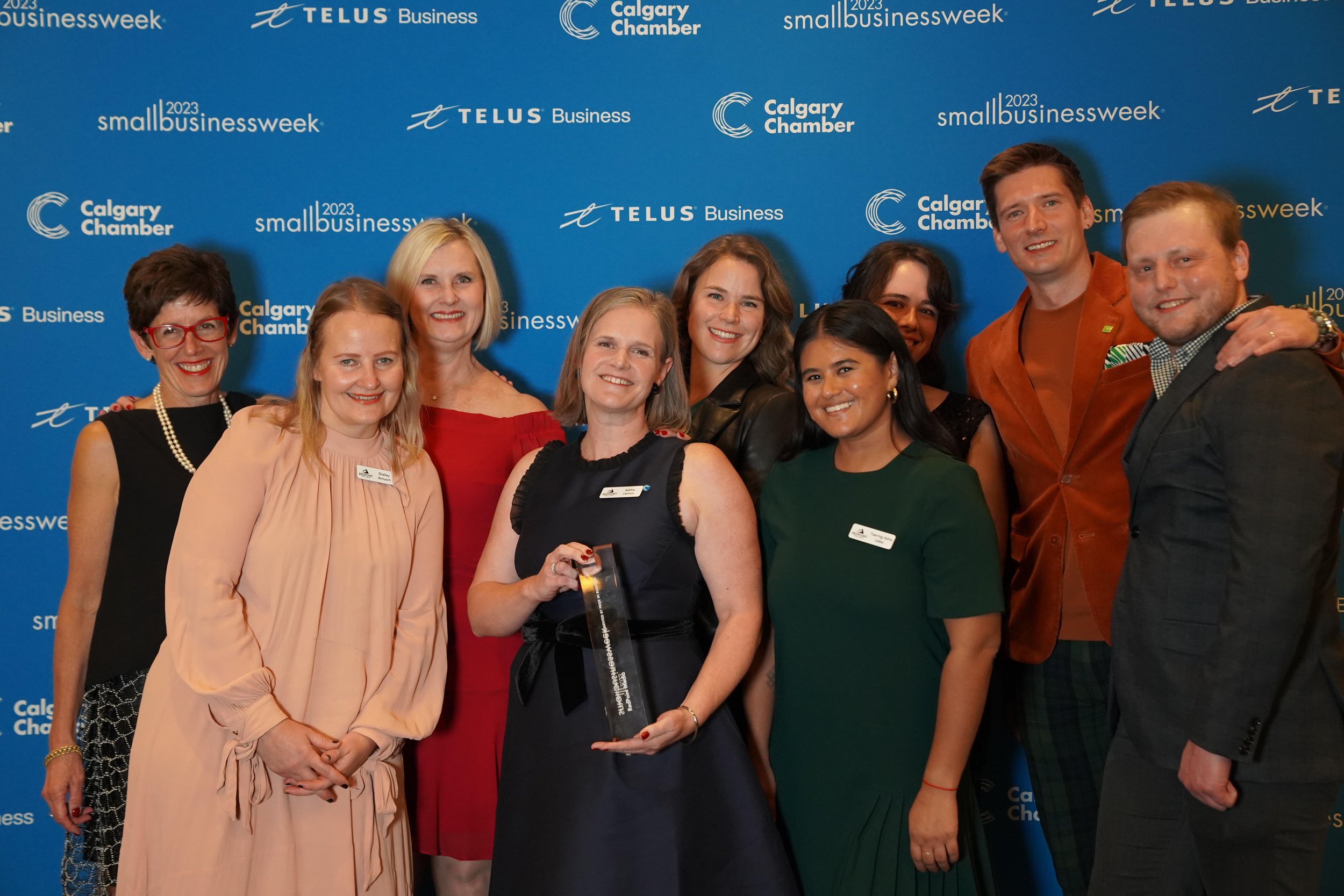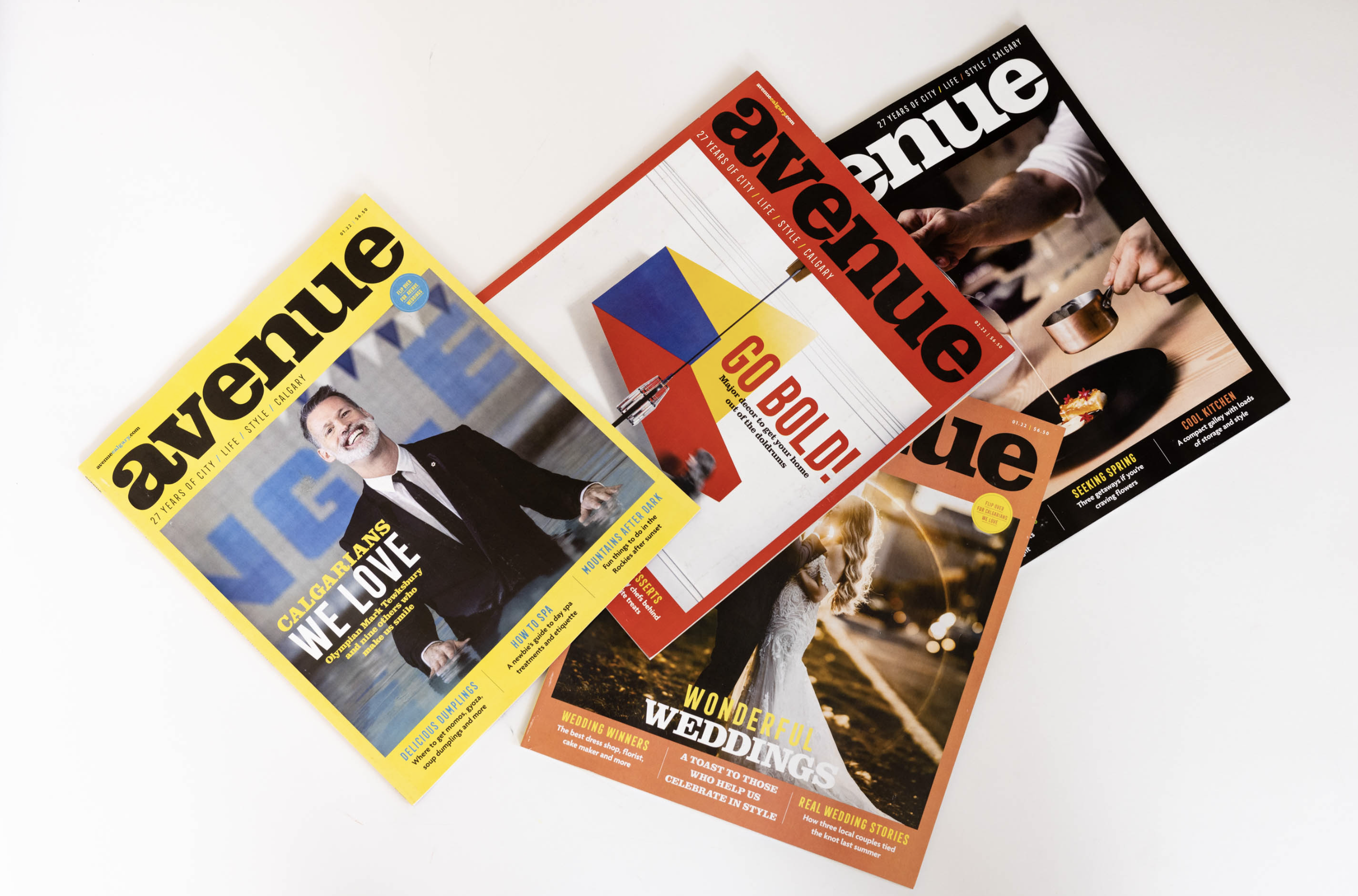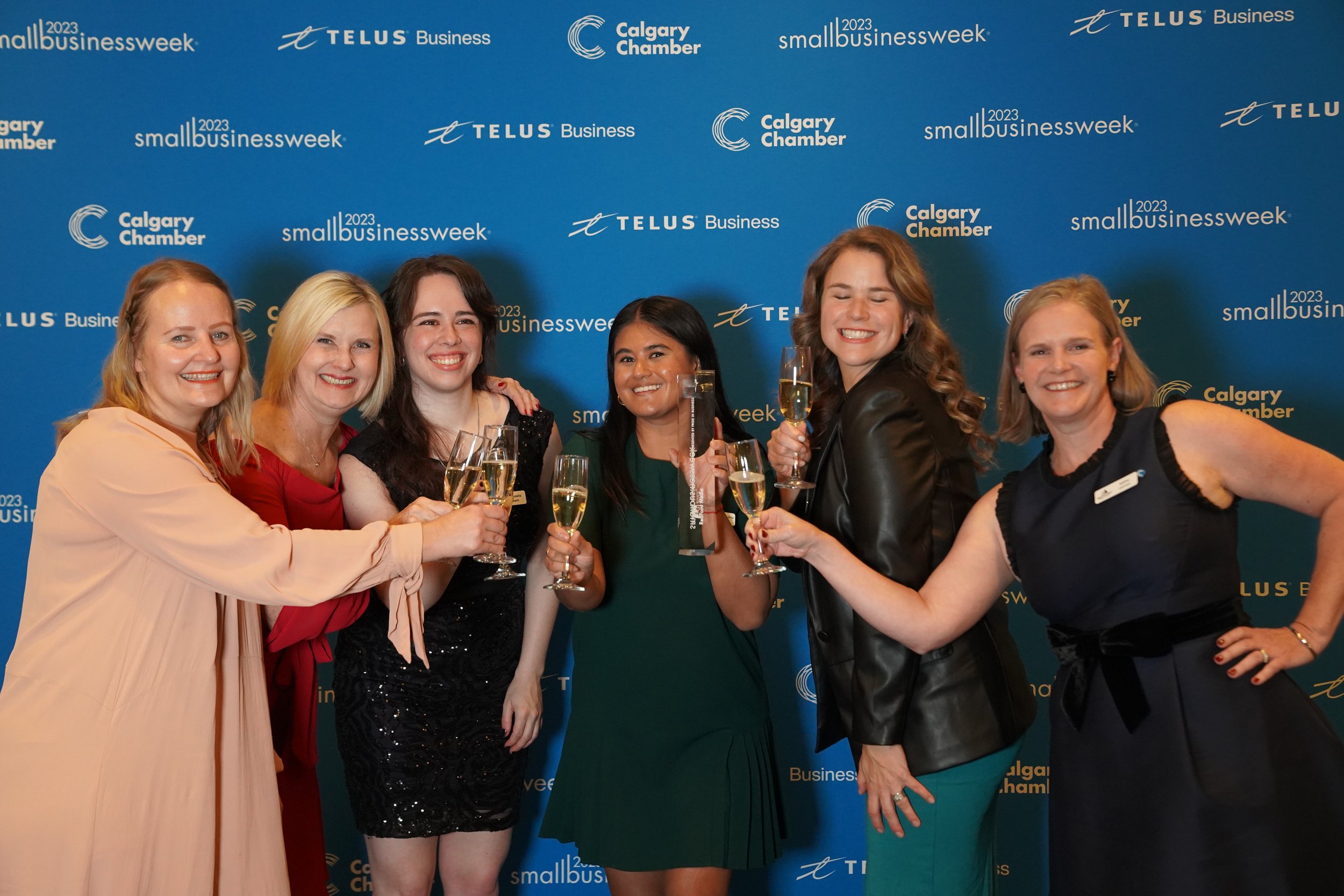Building Inclusive Narratives: Red Point Media Group's Impact on Calgary's Diversity Landscape
Presenting Calgary to the world, one article at a time, with Red Point Media Group.
Red Point received the TD Diversity, Equity and Inclusion Award presented by Pride In Business.
At the 40th Calgary Small Business Awards Gala, presented by the Calgary Chamber of Commerce, we had the honour to co-present the TD Diversity, Equity and Inclusion Award presented by Pride in Business to Red Point Media Group for the work shown in their workplace and community. We sat down with Käthe Lemon, President and Co-owner of Red Point Media Group, to discuss how to bring people together in an inclusive way.
Pride in Business: We are most familiar with Red Point Media Group as publishers of Avenue. What are some of your other publications or services that are a focus for you?
Käthe Lemon: In addition to Avenue magazine, Avenue also has an extensive website with lots of digital-only stories being created each month for our website and four weekly newsletters (Food & Drink, Home & Real Estate, and The Weekender, a newsletter focused on things to do that goes out twice a week). Avenue also has a series of signature events: Top 40 Under 40, Best Restaurants, the Future of the City Festival, and the Innovation Event. And this year we started a membership program — the A-List — for our most committed readers to be able to come to all of our events and give us feedback on the work that we do.
In addition to Avenue, we also publish The Scene magazine — an arts and events magazine for Calgary.
And through our RPM Content Studio we work with a variety of organizations to provide custom content ranging from digital pieces such as interactive PDF reports, blog posts and e-newsletter content, through to full publications and content-driven events. We work with the Calgary Foundation to create Spur magazine, the Alberta Cancer Foundation to publish Leap magazine, Calgary Arts Development to publish Create Calgary, BOMA Calgary to create the BOMA Building Guide and more.
PIB: Avenue has been a mainstay in Calgary for local stories. When did Avenue launch, and what inspired its creation?
K.L.: Avenue launched in December 1994, and we are looking forward to our 30th anniversary next year. The magazine started as a way to celebrate Calgary and highlight the best of life in the city for our readers. From day one, Avenue celebrated Calgary’s arts and culture, fashion, dining scene and the amazing people who make life here so exciting. That mix of content coupled with beautiful stories and great design has been integral to our success since the beginning.
PIB: Why is it important for Red Point to publish local stories?
K.L.: Everything that we do comes back to connecting communities and engaging audiences through trusted storytelling. Most of us live a huge amount of our time online these days and along with the isolation of COVID many of us feel deeply disconnected from our communities. Publishing local stories highlighting Calgarians and their lives, businesses and activities is how we help connect communities.
PIB: What are the core values of Red Point?
K.L.: We work to ensure that our team and our work exemplify teamwork, passion, accountability, innovation, respect and optimism. At each of our quarterly town hall meetings we give concrete examples of how we’ve lived up to these values since the last meeting.
PIB: Congratulations on winning this year's TD Diversity, Equity and Inclusion award presented by Pride in Business at the 40th Small Business Gala! How did it feel to receive this award?
K.L.: Thanks! It was truly amazing to win this award. We continue to be truly honoured by this recognition of our work and efforts. Diversity, Equity, Inclusion and Accessibility have been important to our work for a long time, but we are also still at the beginning of the journey to change our behaviours and outcomes in many ways. This award has inspired us to keep going on that path.
PIB: Why is it important for diversity to be part of the fabric of your team and represented in your publications?
K.L.: We are in a transition from being a fairly traditional publishing company to being a social venture focused on connection. Our mission is to engage audiences and connect communities through trusted storytelling, and our vision is connected communities for all. That means we need to work continuously to think about how to better serve our communities and connect our readers to their city and region. There are a lot of barriers to participation in community life. While we can’t necessarily tackle all of them through our work, we can ensure that a wider group of Calgarians see themselves represented, reflected and welcomed in our content and our workplace.
Calgary is the third most diverse city in Canada and it both needs and deserves local publications, digital content and events that not only reflect but celebrate that diversity.
We believe that great cities need to shift from accommodating diversity to welcoming and attracting diversity, and we want to be one of the catalysts for that shift for Calgary.
We have more work to do, but we have been very fortunate that our readers in particular value our work highly enough to demand that we do better each day to represent, reflect and include a diversity of Calgarians within our work. While an individual publication may have a niche audience, within that niche it’s important that we think broadly about our sources, our readers, their interests and how to connect them to a wider understanding of life in the city.
PIB: What kinds of initiatives have you taken that demonstrate the values of Diversity, Equity and Inclusion in your work and with your team?
K.L.: A lot of our work has been focused on examining and then addressing our own processes and blind spots. This is very necessary work that is also ongoing and will never end. We have been undergoing a lot of training on language use and understanding how traditional journalistic practices in and of themselves can serve to reinforce systemic discrimination of a number of marginalized groups and what we can do to address that.
We worked with the Alberta Magazine Publishers’ Association to create and pilot an Indigenous internship program before the pandemic — this program unfortunately lost its funding and was discontinued. Not only that, but we also worked with InclusionFactor to create a training session for all Alberta magazines on diversity specifically for media workers.
One of our most significant efforts is to try to capture information on all of our quoted sources in Avenue magazine to start to measure how well our sources reflect our community in terms of gender and racial diversity. This work was modelled on the BBC’s 50/50 project. Our initial efforts have given us some great information to move forward developing new sources and to be more critical of our work from the lens of diversity and intersectionality.
PIB: How did you create an inclusive work environment?
K.L.: This is again an ongoing practice and while we hope that our employees feel RedPoint is an inclusive workplace, we are aware that we might not know if not all team members feel they can bring their whole selves to work. Much like being an ally, we feel this isn’t something we can declare about ourselves — it’s something our employees have to say about us. That said, we try to think about how any policy or action could be felt from a variety of perspectives, and we try to ensure that we are open and listening to critique and feedback.
We try to think very broadly about equity and accessibility. We have reached out to new spaces when we post job openings, such as Indigenous job boards. We have a policy that anyone involved in hiring must undergo unconscious bias training to help consider how bias may affect their reactions to job candidates. We have implemented new policies, such as allowing all employees to trade any statutory holiday for another holiday or day that is more meaningful to them than the traditional Christian-centered holidays. We encourage, but do not force employees, to declare their pronouns in their signature lines. We have provided DEI training with a variety of groups including the Centre for Sexuality, Magazines Canada, Alberta Magazines Association, InclusionFactor and others to broaden our employees’ understanding of microaggressions, creating safe spaces, systemic discrimination and other issues.
PIB: How have readers reacted to publications and stories that are increasingly more representative of the values of diversity, equity, and inclusion?
K.L.: Our readership is growing. In 2023, we increased Avenue’s print distribution from 37,000 to 45,000 copies per issue, and we continue to have a pickup rate around 98%. At the same time, our traffic online continues to grow. Our most popular editorial features — Best Restaurants, Best Neighbourhoods and Top 40 Under 40 — top a million-page views in the month they launch. And AvenueCalgary.com averages around 600,000 pageviews a month. Our newsletter subscription and print subscriptions are both growing.
PIB: Are there any new projects you are working on towards furthering the DEI values?
K.L.: We are now working to further refine our source tracking process so that we can be certain that it is comprehensive and to start to add more layers of understanding and depth. For example, we want to know if certain departments or story types demonstrate less diversity than others.
Some day we hope to be able to develop a source tracking tool that we can share with other media outlets and marketing companies to measure diversity and inclusion within media work and potentially to help create shared resources to better find and reflect marginalized voices as sources.
This year, for the first time, Avenue’s Best Restaurants coverage will include an award for Best Accessible Restaurant. The judges for this category are Calgarians who eat out frequently and who live with a disability. Working on this story not only resulted in a great addition to our editorial feature that will be informative for our readers, it also highlighted for our editorial team a variety of issues that people with disabilities face while dining out that we had not been aware of before. We learned a lot, and we are sure our readers will too. This has inspired us to do much more to think about how our coverage needs to change to better consider the needs of Calgarians living with disabilities.
ABOUT THE AUTHOR
Simon Trudel-Lachance
PIB — Finance and Operations Manager / Content Writer
Pride In Business article in partnership with TD.
By Simon Trudel-Lachance









